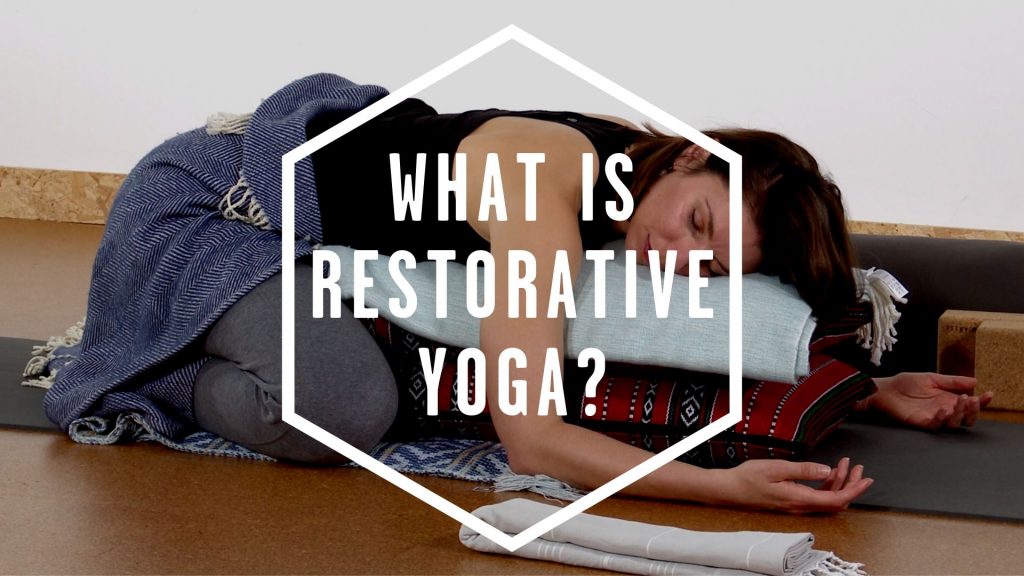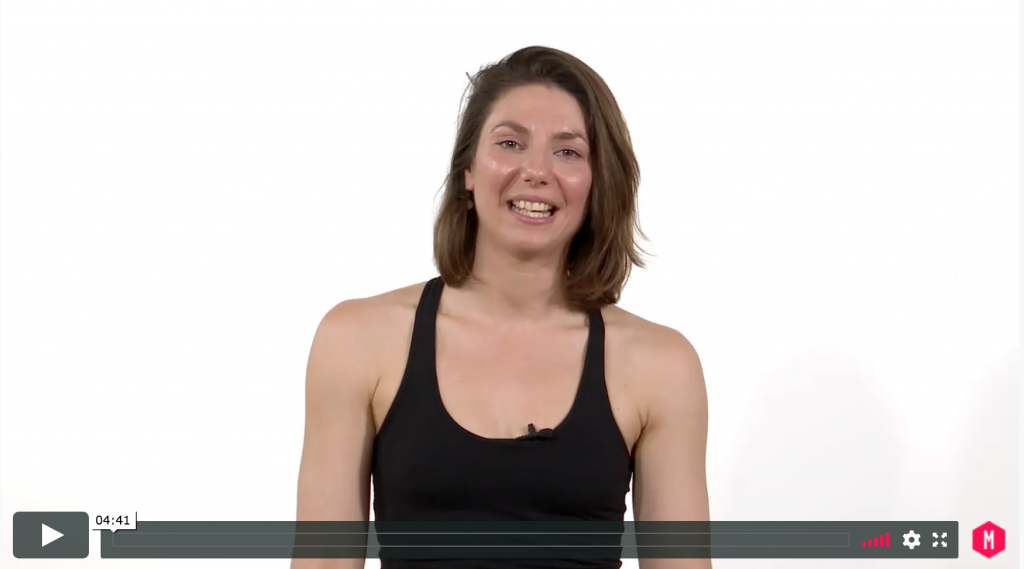
Do you need a style of yoga that allows you to rest? Are you yearning for greater stillness? Restorative yoga may be just what you need.
Restorative yoga offers passive, supported stretches using props like blankets, bolsters and bricks. This style of yoga offers a valuable counterpoint to more fiery, heating practices like vinyasa flow and is an exceptional way to calm the nervous system. Whilst it is simple, it is not always easy. In active yoga practices you heat and stretch your muscles. In restorative yoga, the stretches are supported by props to allow the opening to be passive.
Restorative yoga is practiced on the floor and most of the shapes will be ones you recognise from more active practices but re-imagined in a way to fully support the body and allow for relaxation. So an active bridge pose is one in which the torso is actively being lifted, energy is used to come into the pose by pressing down into the feet and raising the hips skyward. In a restorative bridge pose, the hips and sacrum are supported often with a bolster to allow a passive backbend.
I’m intrigued. Why do you say Restorative yoga is simple but not always easy?
Many of us find it difficult to slow down, rest and find stillness. Restorative yoga is not physically demanding but it can be challenging to stay in long holds with few distractions and fully follow the movement of the breath in and out. We are used to taking part in activities that are stimulating to wind down. We watch films, play on our phones, read and become entangled in stories that our bodies might find stressful.
“The modern-day nervous system processes today’s incessant electronic requests in much the same way as it would the attacks and invasions of prehistoric life. We’ve just become so used to the constant, overwhelming demands that we no longer consciously recognise them as stress. To us, multisensory overload is a part of normal everyday life.”
Bo Forbes
Okay, I’m convinced it’s worth trying but what happens in my body in restorative yoga?
Well the main thing that happens is that the parasympathetic nervous system is in control. This is sometimes called ‘rest and digest’.
Let’s rewind a bit: when we are stressed are body prepares to flee from the ‘danger’ whether it was a bear in years past or maybe an email from our boss now. The sympathetic nervous system is in charge. This means that many of our bodies’ systems slow down or close down such as our digestive and reproductive systems. Our bodies are also flooded with adrenaline. After all, we probably don’t want to tuck into a feast when fleeing a bear but an adrenaline boost might help. This is ok for a short time, but long term, this leads to chronic stress and may result in illness.
In restorative yoga, the body is allowed to slow down and rest and in this state the heart rate slows down and the brain quietens. The immune system is strengthened, tissue repair takes place, the digestive system and reproductive system can begin to function optimally and the body can find balance and equilibrium.
How to prepare for restorative yoga?
Keeping warm really helps. Layer up during restorative yoga and it is fine to keep your socks on. Dimming the lights can also be nice and enhance your environment in any way that supports you to relax. Restorative yoga takes time: you’ll find yourself doing only five or six poses in an hour. Finally, you might want extra blankets: for weight as much as for warmth.
What equipment do you need for restorative yoga?
You’ll need lots of things for support but they’re all things you can find at home. And it’s definitely worth it! Gather together pillows and cushions or bolsters if you have them. Yoga bricks and blocks or use books if you have them. Eye bags or scarves and cloths and straps or ties are all helpful.
Want to find out more about Restorative Yoga and Prop substitutions? Watch this from Adrianna

If you’ve been inspired you can try one of Adrianna’s classes or browse through our other Restorative yoga classes.





Leave a Reply